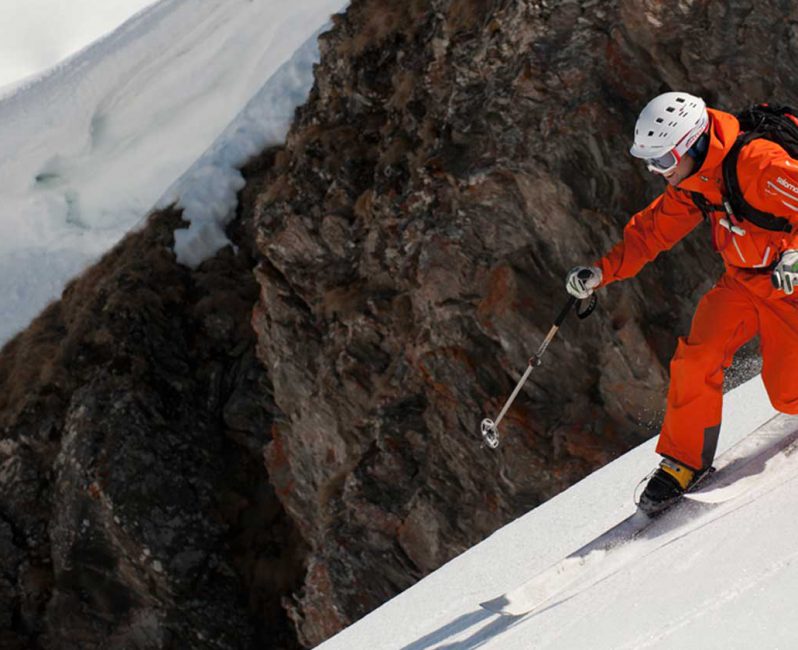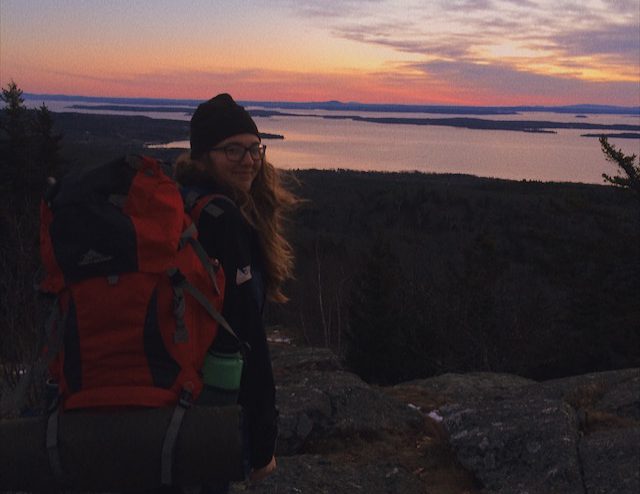This echos a post on my “being Jewish in Maine” blog, Downeast Kvetch, but I’m going to talk less about Judaism and more specifically about telemark skiing.
A year or two ago, telemark skiing was declared “dead” by Powder magazine. They may or may not be wrong. Innovations in telemark ski equipment are on the decline, in part due to a transformation of alpine gear that has subsumed telemark’s role in backcountry skiing.
Perhaps it was inevitable for the elan of a tele turn to take a back seat to the perhaps more accessible turns alpine carving afford. When I was first plying my backcountry skills in Hatcher Pass or Turnagain Pass when I was stationed in Alaska with the Army, I’d snowshoe my way up, and tele down. With skins and ski crampons, I had accessibility to the backcountry that others did not. Alpine bindings surely have meaningfully evolved, and have rightly democratized effort-based access to the backcountry.
Telemarking always had one of its strongest footholds here in New England, but this season, I’ve only seen one other telemark skier at our local mountain, and he was making alpine style turns vs. our glorious lunge. Maybe he was tired. One of the ski instructors in the lift line didn’t understand why my heels were free, and I had a depressing realization that telemark is indeed falling off the radar of resort awareness.
There are some spots we don’t reveal in Maine, but backcountry skiing is alive in this state. This year, I’ve seen no other telemark in Maine’s limited backcountry. It’s all been alpine skis (mostly carried) and snowboards (all carried).
You may think I’m an evangelist, but that’s really not the case. I do think the tele turn is graceful and beautiful. For me, there’s something satisfying about dropping the knee and then lunging out of a turn. Is it superior to alpine skiing? It’s a subjective metric. I think it’s easier to learn how to get down safely with alpine equipment. Learning the tele turn can be initially frustrating. If it’s the first form of skiing you are learning, it can feel counterintuitive coming out of the snow plow/wedge staple.
I learned how to telemark as an extension of ski training during a rotation at the Northern Warfare Training Center. I was an “Arctic Paratrooper,” at the time a battalion of airborne infantry on Fort Richardson near Anchorage. We spent a considerable amount of time at the Black Rapids Training Site in the state’s interior, learning how to use those military issue “white rockets.” Part of the problem in the modern era of the service is that we don’t recruit specifically people who can already ski or snowshoe, and so you’d end up with a unit full of people ostensibly capable of arctic warfare, but who found it very difficult to get down hill with anything beyond a graceless snowplow with a controlled fall at the end.
I lucked out with an instructor who took a handful of already competent skiers, and introduced us to the tele turn. There I was, dropping the knee and lunging with white bunny boots and a utility binding. Later, I used military issue climbing skins (which I still use today for their nice strap capability), and started finding my way to the backcountry of Alaska on my own, albeit with better skis.
If you already have an investment in alpine gear, I’m not here to try and change your mind.
Telemark skiing is perhaps anachronistic. It’s true, we don’t enjoy the leap forward alpine gear seems to make each year. I have my Rossignol T3s, solid Rottefella Cobra bindings from a year or two back, and some seasoned Crispi boots. It’s a comfortable ride up and down a mountain for me with these. I commune with nature.
Judaism isn’t dissimilar in that regard, particularly for the more traditionally observant. The liturgy is always the same. Like my transition from a less responsive Voile three-pin binding to the Rottefella, I may have switched from the ArtScroll to the Koren siddur, but the technique doesn’t difference. It’s an incremental variance.
The important thing, too, isn’t so much the approach, but what we’re doing. I feel more intimately engaged with a traverse on telemark skis than I do in alpine setup. I feel intimately engaged with the Divine. My 500th time carving a turn still feels every bit as fresh to me as the first time, just as the thousandth time I’ve laid tefillin is every bit as engaging as the first time.
In many ways, I’d argue, telemarking is the most Jewish approach to snow sports.
But the important thing is to get out.
If you live in Maine or visit over the winter, give us a shout. We’re trying to form a Maine Hebrew Ski Society at our synagogue. Jews and non-Jews alike are more than welcome to join.
Last modified: March 5, 2019


